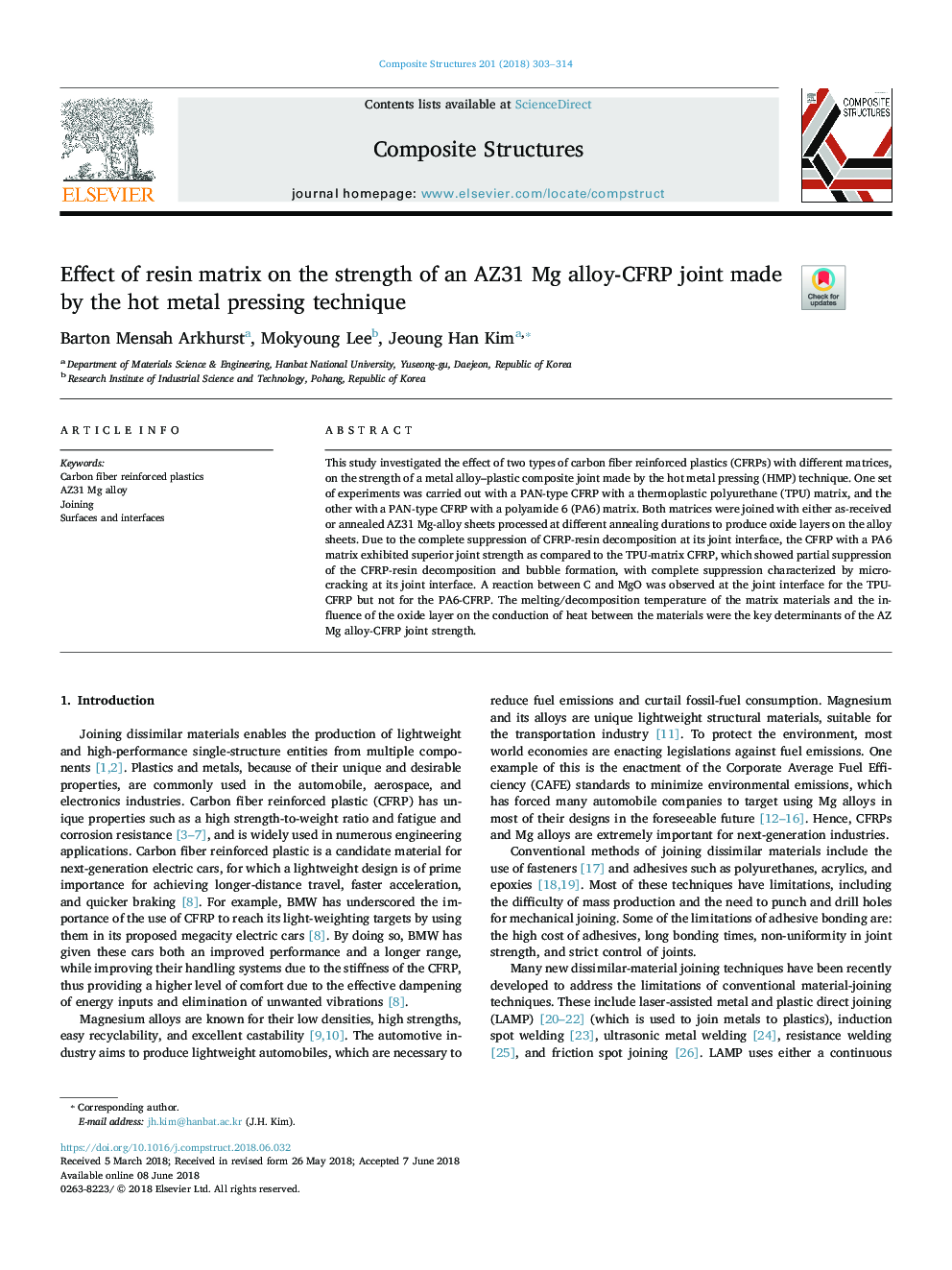| Article ID | Journal | Published Year | Pages | File Type |
|---|---|---|---|---|
| 6703064 | Composite Structures | 2018 | 12 Pages |
Abstract
This study investigated the effect of two types of carbon fiber reinforced plastics (CFRPs) with different matrices, on the strength of a metal alloy-plastic composite joint made by the hot metal pressing (HMP) technique. One set of experiments was carried out with a PAN-type CFRP with a thermoplastic polyurethane (TPU) matrix, and the other with a PAN-type CFRP with a polyamide 6 (PA6) matrix. Both matrices were joined with either as-received or annealed AZ31 Mg-alloy sheets processed at different annealing durations to produce oxide layers on the alloy sheets. Due to the complete suppression of CFRP-resin decomposition at its joint interface, the CFRP with a PA6 matrix exhibited superior joint strength as compared to the TPU-matrix CFRP, which showed partial suppression of the CFRP-resin decomposition and bubble formation, with complete suppression characterized by microcracking at its joint interface. A reaction between C and MgO was observed at the joint interface for the TPU-CFRP but not for the PA6-CFRP. The melting/decomposition temperature of the matrix materials and the influence of the oxide layer on the conduction of heat between the materials were the key determinants of the AZ Mg alloy-CFRP joint strength.
Related Topics
Physical Sciences and Engineering
Engineering
Civil and Structural Engineering
Authors
Barton Mensah Arkhurst, Mokyoung Lee, Jeoung Han Kim,
